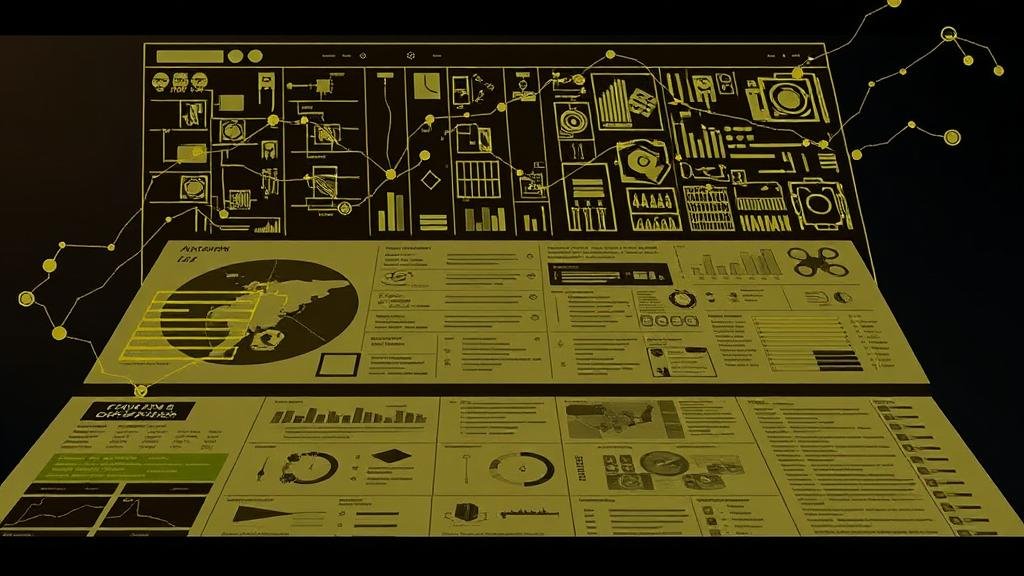Leveraging AI to Identify Overlooked Artifact Patterns in Historical Mining Records
Leveraging AI to Identify Overlooked Artifact Patterns in Historical Mining Records
The integration of artificial intelligence (AI) into the analysis of historical mining records represents a groundbreaking opportunity to uncover hidden patterns and insights that were previously overlooked. Historical mining records contain a wealth of data, ranging from mineral yields to labor practices, yet these records often remain underutilized due to their complexity and volume. This research article explores the methodologies for leveraging AI to analyze these records, ultimately demonstrating its potential to enhance our understanding of historical mining operations.
The Significance of Historical Mining Records
Historical mining records provide critical insights into mineral extraction practices, economic conditions, and social impacts of mining in various regions. For example, the Comstock Lode in Nevada, which was discovered in 1859, yielded over $400 million worth of silver in the 19th century. Such records are not only valuable for historians but also for mining companies interested in the legacy of mining operations and their impacts on local communities.
Challenges in Analyzing Historical Mining Records
Despite their potential value, the analysis of historical mining records is fraught with challenges including:
- Data inconsistency: Records are often handwritten or poorly digitized, leading to difficulties in interpretation.
- Volume of data: The sheer amount of information available can overwhelm traditional analytical methods.
- Lack of contextual information: Many records lack adequate context, making it difficult to draw meaningful conclusions.
Applying AI Techniques in Historical Mining Records Analysis
The application of AI techniques, such as natural language processing (NLP) and machine learning (ML), offers innovative solutions to the above challenges. Here are some key methodologies:
Natural Language Processing (NLP)
NLP can be employed to decode and analyze vast amounts of text data found in historical mining documents. This includes:
- Digitizing handwritten records using optical character recognition (OCR) technology.
- Extracting relevant information such as dates, locations, mineral types, and associated labor forces.
For example, the project “Mining the Archive†used NLP tools to examine mining records from the 19th-century California Gold Rush, revealing patterns in labor migration that had previously gone unnoticed.
Machine Learning (ML)
Machine learning algorithms can be trained to identify and classify data patterns. By applying supervised learning techniques, historians can train models to recognize relationships between different data facets, such as:
- Associations between the mineral yield and economic indicators.
- Patterns in labor demographics correlated with production levels.
In 2020, a study analyzed mining records from the 1800s in the Appalachian region and identified correlations between technology adoption and mineral yield increases. The ML model provided predictive analytics that could guide current mining operations.
Case Studies of AI Useation
Several case studies illustrate the successful application of AI in the analysis of historical mining records:
- Project “Data Mining†(2018): This initiative utilized NLP to process thousands of mining reports from the late 19th century in Colorado, identifying significant trends in operational efficiency.
- Historical Mining Patterns Analysis (2021): A team of researchers applied ML algorithms to mining records of the Silver Valley in Idaho, uncovering previously hidden patterns in environmental impacts due to mining activities.
Implications for Future Research and Practical Applications
The implications of leveraging AI technology for analyzing historical mining records extend beyond historical understanding. can inform current and future mining practices in several ways:
- Improving sustainability by understanding the historical impact of mining on local ecosystems.
- Enhancing economic efficiency by analyzing past operations to identify successful strategies.
- Providing insights into social dynamics, thereby promoting more responsible mining practices that consider local communities.
Conclusion
To wrap up, the effective application of AI technologies to historical mining records represents a significant advancement in both historical research and contemporary mining practices. By utilizing tools such as NLP and ML, we can uncover valuable insights that not only enhance our understanding of the past but also guide the future of resource extraction. The journey of integrating AI into this field is just beginning, and further research will only increase its potential to shape sustainable practices.
As more historical records become digitized and accessible, ongoing collaboration between historians, data scientists, and mining professionals will be essential to fully realize the benefits of AI in this domain.



